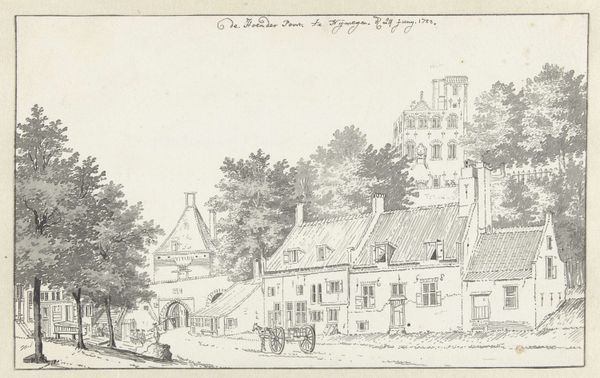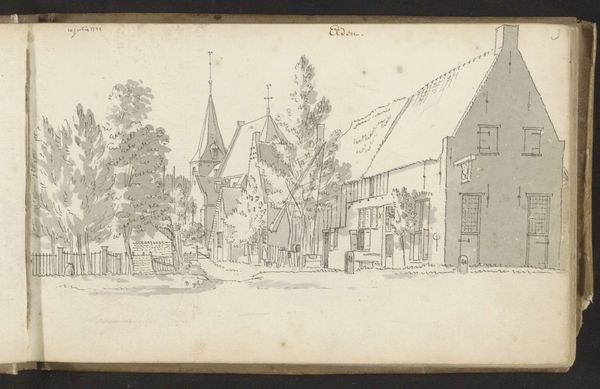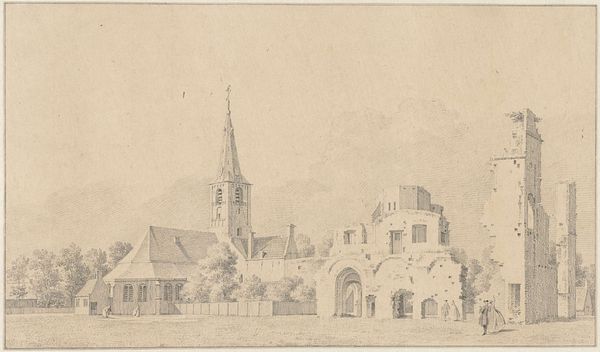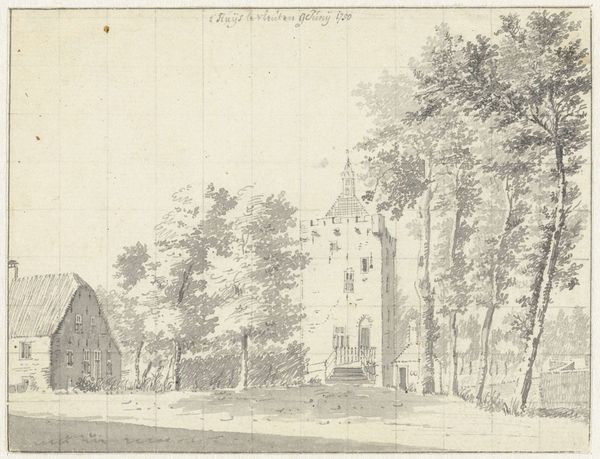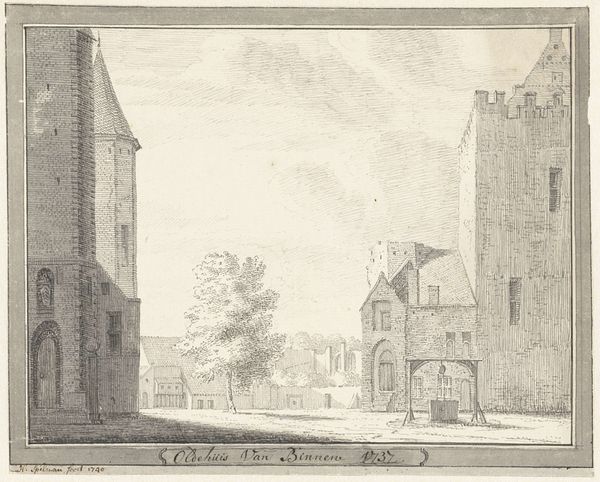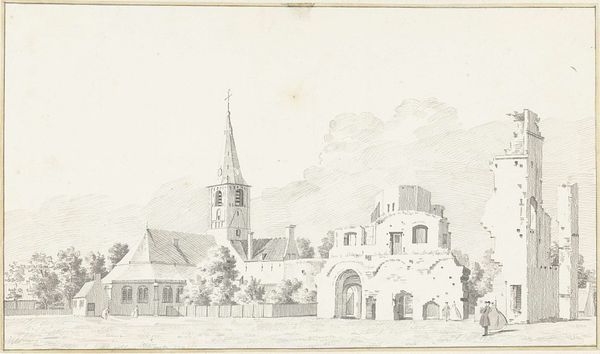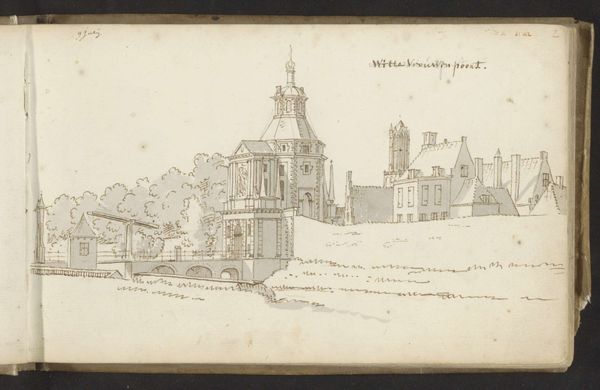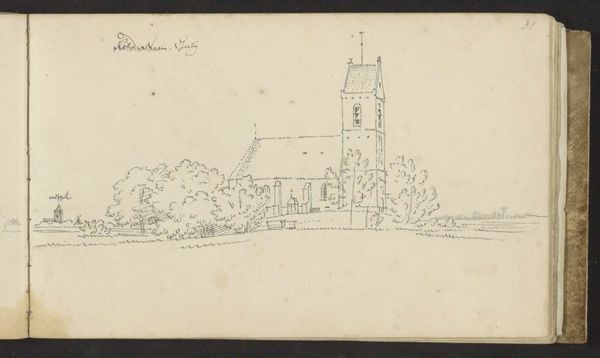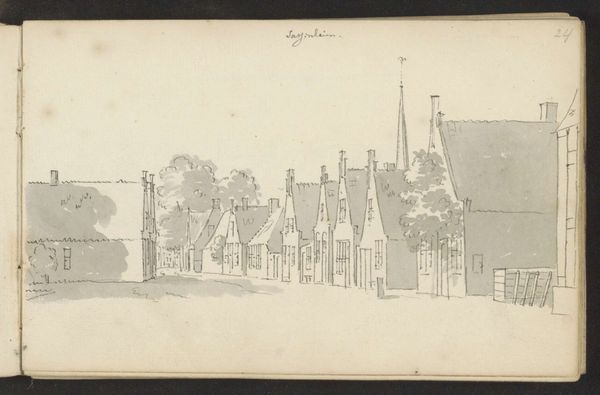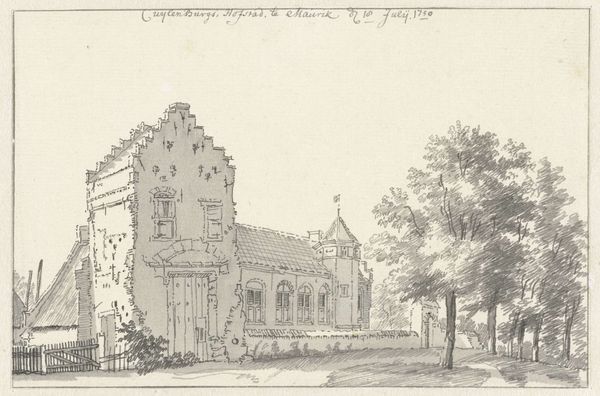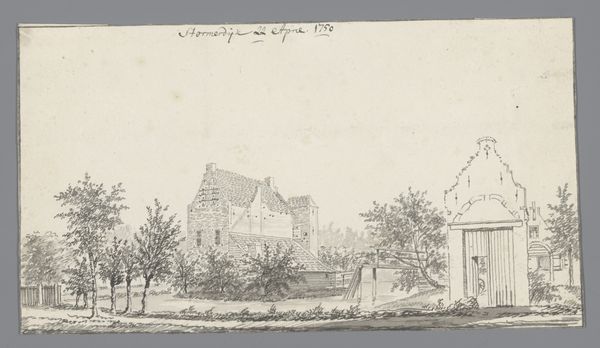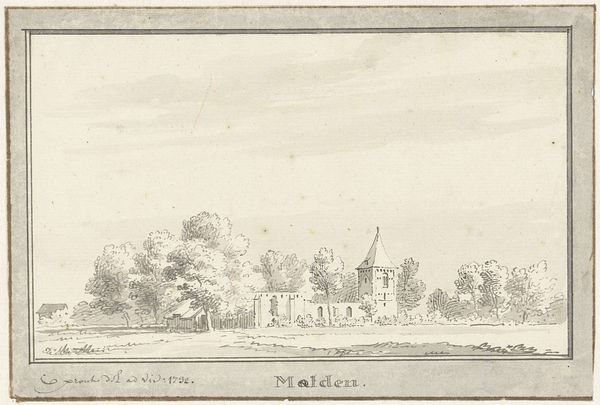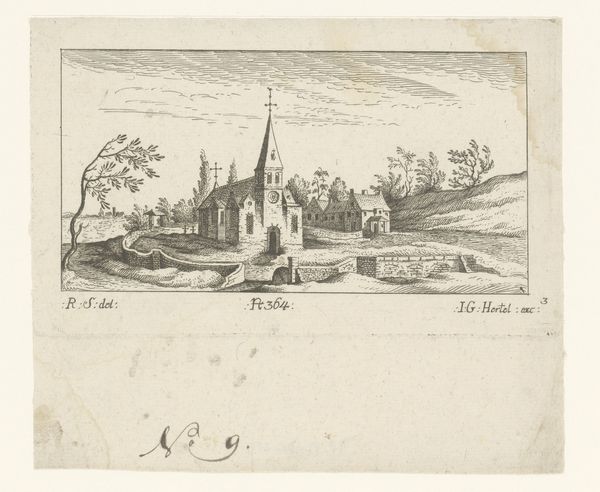
drawing, etching, pen, architecture
#
architectural sketch
#
drawing
#
aged paper
#
medieval
#
mechanical pen drawing
#
etching
#
old engraving style
#
landscape
#
etching
#
personal sketchbook
#
sketchwork
#
pen work
#
architecture drawing
#
pen
#
storyboard and sketchbook work
#
architecture
Dimensions: height 150 mm, width 200 mm
Copyright: Rijks Museum: Open Domain
Curator: Here we have Cornelis Pronk’s "Het slot Oldehuis te Vollenhove, van binnen," created sometime between 1701 and 1759. It's currently held in the collection of the Rijksmuseum. Editor: At first glance, it strikes me as remarkably precise. The linework is delicate, almost airy, considering the subject matter. It’s like a stage set, this old house, slightly unsettling. Curator: Absolutely, and that precision comes from Pronk's method. Notice the architectural details – the deliberate strokes of the pen and the use of etching techniques. This wasn’t just about aesthetic beauty; it was a record. Consider how such depictions of grand houses functioned as status symbols and markers of territorial control for their owners, reflecting a certain social hierarchy of the time. Editor: I see what you mean. There's a formality to the composition, almost a mathematical quality in how Pronk handles perspective, yet it maintains a light, open feeling. The negative space balances the structure in interesting ways, creating a push and pull between the heavy architecture and airy lightness. This interplay elevates the visual interest. Curator: Yes, and think about the context. Pronk’s drawings weren’t made in a vacuum; they were part of a larger artistic and economic system. These depictions of country estates are artifacts of land ownership, privilege, and artistic labor within that period. Who commissioned this, how were such drawings circulated, and how did the making process embody those social relations? These all shaped its very existence. Editor: That’s insightful, to also remember the networks of exchange this embodies. Shifting back to its formal properties, it is important to point out how Pronk has organized space— layering shapes one atop another with his dark, confident outlines to give an impression of looking through, an effect achieved not merely through skillful handiwork, but calculated visual processing. Curator: Looking at this piece invites multiple questions about its making and how society influenced this representation of status. It gives us a glimpse into the ways social class manifested materially. Editor: Precisely! Pronk has offered a meticulous rendering, not only showcasing architectural grandeur but also hinting at the society that enabled and perpetuated such structures.
Comments
No comments
Be the first to comment and join the conversation on the ultimate creative platform.
